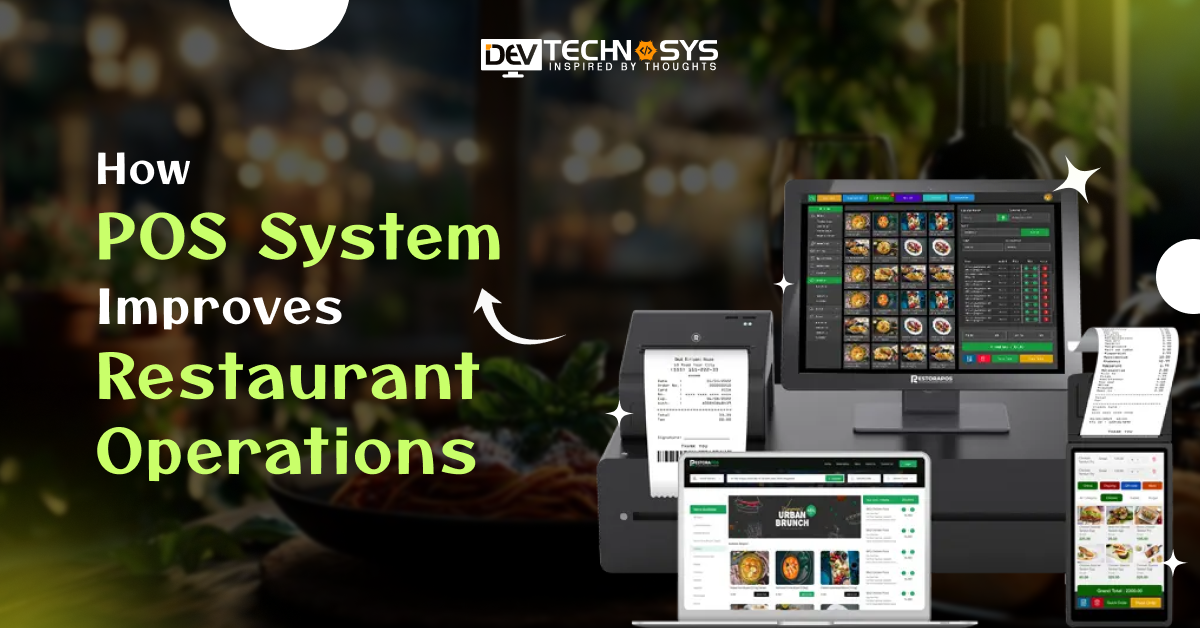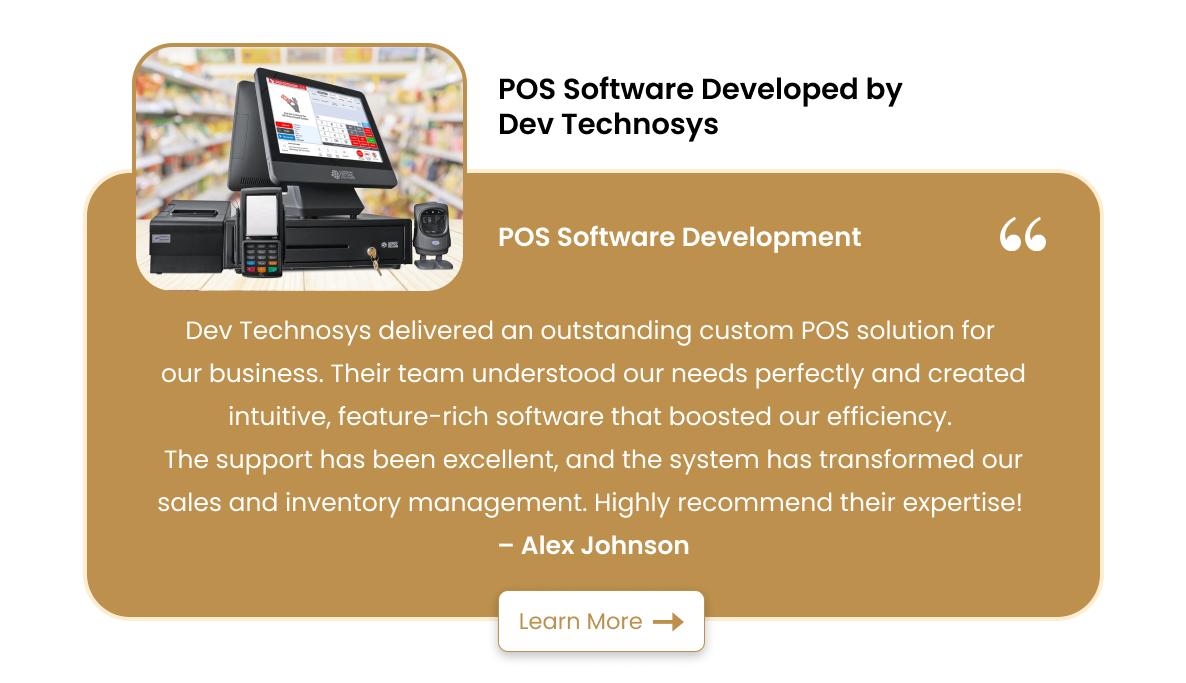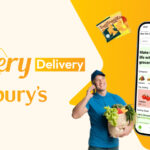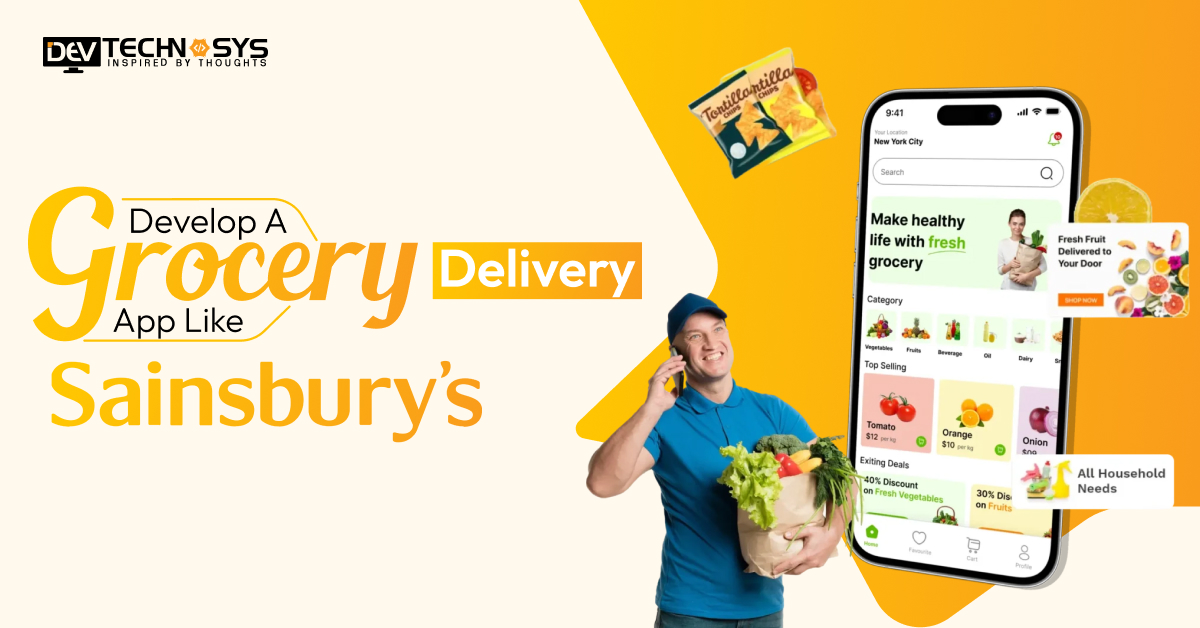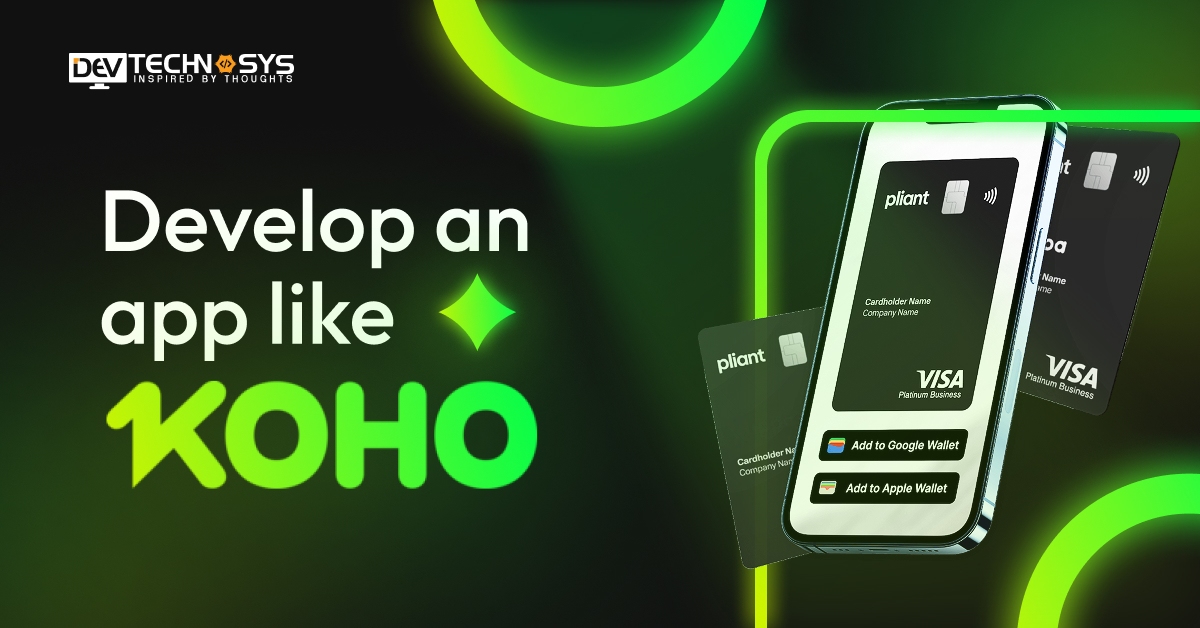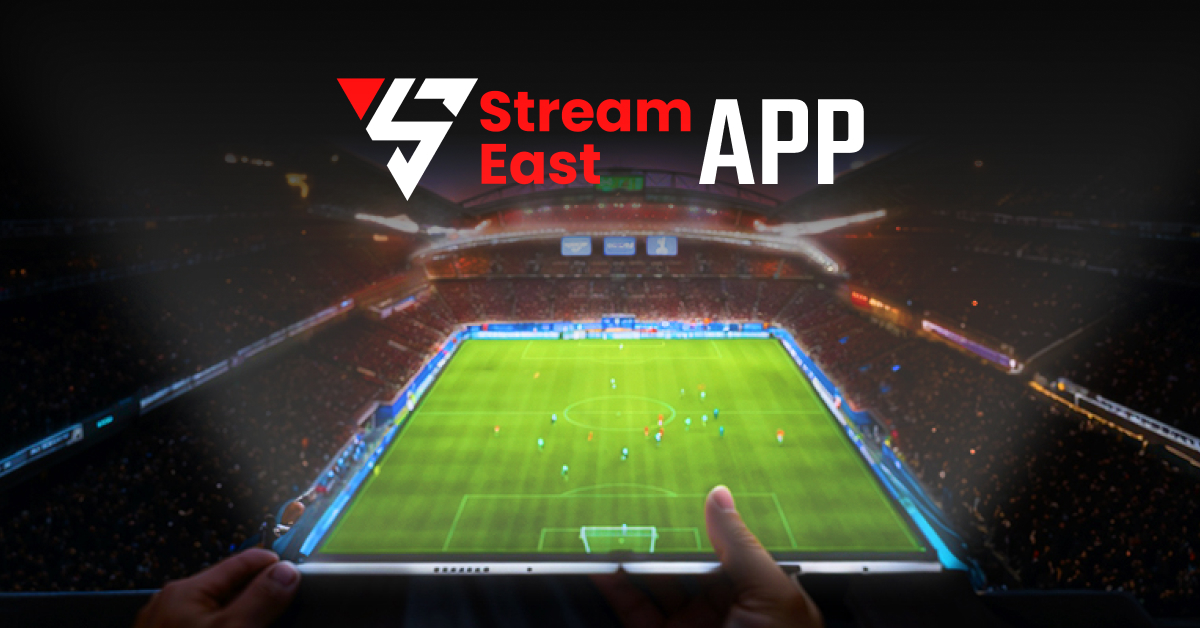Operating a business is not simple. It is hard to keep track of everything—from orders and supplies to payments and customer satisfaction. A POS system can help with that.
Currently, POS system is more than just a cash register. It makes daily tasks easier, boosts productivity, and aids restaurant owners in making smarter business choices.
The POS system improve restaurant efficiency by speeding up service and cutting down on mistakes by managing orders, keeping track of goods in real time, and billing automatically. Also, it gives you useful information about sales patterns, customer tastes, and how well your staff is doing.
No matter how big or small your restaurant business is, investing in POS system can improve the overall dining experience, boost productivity and lower costs.
This blog will discuss about how POS system improves restaurant operations and make management easier and faster.
So, let’s begin!
What is Restaurant POS System?
Restaurant POS system is a software that helps in managing restaurant operations. If you own a restaurant, you need a POS system to run your whole business.
This includes taking orders, handling the floor plan and reservations, reporting on sales, counting inventory, scheduling staff, and setting prices for the menu.
The POS software can improve business operations as the whole system for running the restaurant. Anything with an internet connection will let you get into and run your restaurant, like a computer, tablet, or smartphone.
For example, a fast food POS system might use tablets in the restaurant, but you can use your phone to look at your data at home.
Some Interesting Facts on Restaurant POS Systems
- Starting in 2025, the Restaurant POS Systems Market is expected to be worth $13.35 billion. By 2034, it is expected to be worth $28.06 billion, a growth rate of 8.6% per year. (Market Research Fortune)
- In 2023, a POS for restaurants operations trends study found that old systems were still being used by 23% of restaurants, while 76% used cloud-based point-of-sale (POS) systems. (Touch Bistro)
- There were 3.25 million Point of Sale (POS) machines in Italy in 2023.
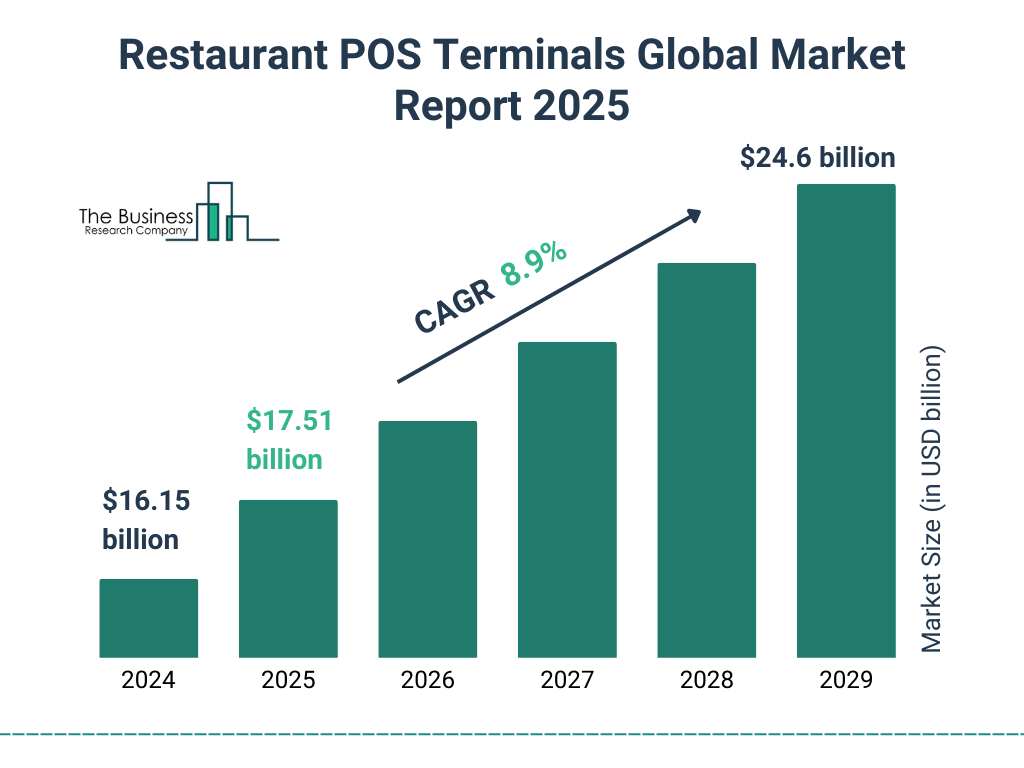
Source: The Business Research Company
- 86% of restaurants use POS data to plan their marketing, reward programs, and discounts.(Hotel Tech Report)
- In fact, 69% of restaurant owners say that the most important thing about new point-of-sale (POS) software is that it works with other programs, like banking or hotel management software.
How Does a Restaurant POS System Work?
A restaurant POS system development helps in processing transactions and tracking inventory. Businesses may manage their entire operations with a POS system for restaurants. A POS software development company explained the working mechanism of a restaurant POS system.
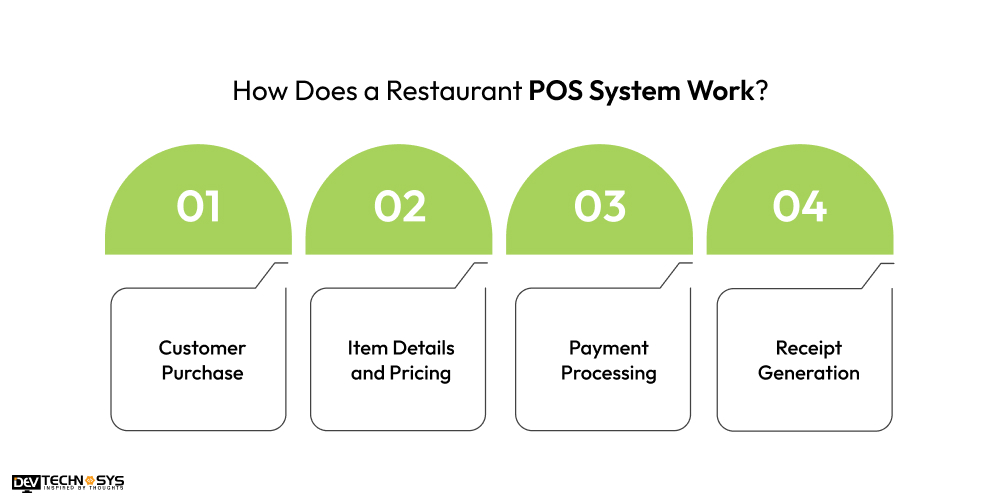
1. Customer Purchase
A customer starts the process by choosing the good or service they want to buy. Either a barcode scanner or a person entering the information by hand is used to scan this thing.
2. Item Details and Pricing
The POS gets information about the item, like the price, from a database that is already loaded when the item is added. Taxes, discounts, and special offers are taken into account automatically when figuring out the total cost of the buy.
3. Payment Processing
Once the sum is known, the customer chooses how to pay, which could be cash, a credit card, a digital wallet, or something else. If the payment is made online, you can integrate payment gateway with POS that ensures it is processed safely by the POS system.
4. Receipt Generation
The POS system prints a receipt as proof of the transaction as soon as the payment is processed. This ticket can be printed on a receipt printer or sent to the customer electronically through email or text message, depending on how the business is set up.
8 Ways POS System Improves Restaurant Operations
Managing a restaurant business is not easy. It takes speed and accuracy to handle orders, keep track of inventory, and process customer payments. A POS system can help with that. A POS for restaurants makes things run more smoothly, gives customers a better experience, and helps the business make more money. Here are the benefits of using restaurant POS software.
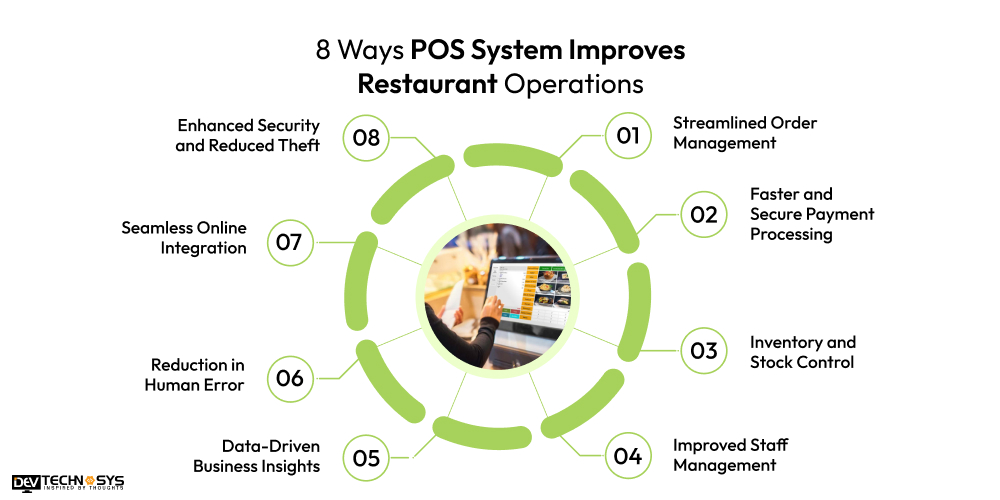
1. Streamlined Order Management
A restaurant’s biggest problem is keeping track of all the orders quickly. A POS system makes it easier to place an order as wait staff can enter orders straight into the system, which sends them right away to the kitchen.
This gets rid of the need to take orders by hand, which makes it easier for staff and cooks to communicate. POS systems important in restaurants also allow for customization, which makes sure that special wishes and dietary restrictions are communicated correctly.
POS system improves restaurant operations by speeding up service and makes customers happier by lowering the chance of mistakes and making sure food is made the way they asked for.
2. Faster and Secure Payment Processing
A point-of-sale (POS) system speeds up the payment process so customers do not have to wait as long. Credit and debit cards, digital wallets, and mobile payments can all be used with modern POS systems.
This makes things easier for customers and speeds up the table movement. POS system improves restaurant operations by making deals safe by encrypting payment information, which lowers the risk of fraud and chargebacks.
Businesses can make billing easier for their customers by including tax calculation and with invoice software development solution. This makes the dining experience better for all.
3. Inventory and Stock Control
Handling a restaurant’s stock by hand can take a lot of time and lead to mistakes. The key benefits of restaurant POS system is to keep track of stock amounts, ingredient usage, and supplier information in real time, which makes inventory tracking automatic.
The system can send messages when an item is getting low, which stops stock shortages and over-ordering. Some more advanced point-of-sale systems can also connect to suppliers and automatically restock, which keeps the supply chain running smoothly.
The impact of POS systems on restaurant is it lowers costs, cuts down on food waste, and makes menu planning easier, all of which help restaurants stay profitable.
4. Improved Staff Management
It can be hard to keep track of staff plans and hours by hand. A point-of-sale (POS) device keeps track of work shifts, attendance, and performance automatically. Managers can set sales goals, give out tasks, and check on workers’ progress in real time.
The POS software development solution also show restaurant owners peak hours, best-selling items, and employee performance, which helps them hire the right people and work more efficiently. This cuts down on labor costs, makes sure everyone is responsible, and keeps the place running smoothly even when it is busy.
5. Data-Driven Business Insights
A POS system makes thorough reports on sales, costs, customer preferences, and how profitable the business is. These real-time analytics help restaurant owners run their businesses better.
Restaurants can change prices, run specials, and add better items to their menus if they know how their customers usually buy things. Keeping an eye on financial success can also help you cut costs and make more money.
With cloud-based payment software solutions development, managers can view business reports from anywhere, making it easy to run a restaurant.
6. Reduction in Human Error
POS systems are simple to use and keep you from making mistakes that can happen with pen and paper. In restaurants, where a single item goes through a lot of steps that need to be recorded, the integration of a POS system improves restaurant operations.
To give you an example, the procedure does not end when the server takes a customer’s order and adds it up. Plus, you need to keep track of it in your books, your supplies, and other places. Things can go wrong at any time.
When you sell dozens of drinks and meals every day and pass data to different people several times, even small mistakes can quickly become big problems. POS systems can avoid this problem if they can connect to all of your other systems and update all the necessary records as soon as an order is taken.
7. Seamless Online Integration
With the rise of online food delivery services, POS systems work well with third-party apps like DoorDash and Uber Eats. This ensures that orders are correctly synced, which cuts down on mistakes made by hand and speeds up the order processing process.
Restaurants can also offer online pickup and delivery through their website or mobile app. This is one of the best benefits of POS systems in restaurants that help to run more smoothly and get more customers. POS integration also makes it possible to automatically keep track of customer data, online sales, and inventory.
This creates a single method for both in-person and online orders. This connectivity makes the business more productive, reduces work, and brings in more money overall.
8. Enhanced Security and Reduced Theft
Restaurants need to be very careful about security as they deal with a lot of cash, credit cards, and private customer information. The POS system improves restaurant operations with many safety features that help keep people from getting in without permission, cut down on theft, and lower the chance of financial mistakes.
One of the best things about a POS system for security is that it lets you control who can use it and how. Restaurant owners can give each employee a job and a set of permissions.
This way, only authorized staff can handle refunds, cancel transactions, or get private financial information. This keeps people from doing things they should not and lowers the risk of internal theft.
4 Types of POS Systems for Restaurants
Restaurants’ multiple requirements rely on their size, type, and operational model. Below are the most common types of POS systems available that you can leverage for your restaurant:
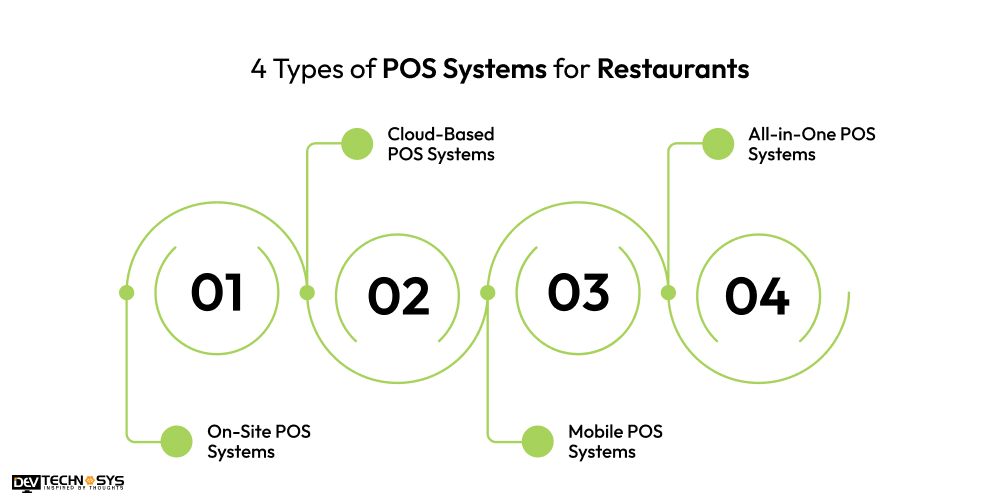
1. On-Site POS Systems
These standard systems are set up on-site and usually include tools like desktop computers and servers. Online point-of-sale systems work well and can be changed to fit your needs, but they can be pricey to set up and keep up. They work great for big restaurants or companies that want to keep their data on local computers for safety reasons.
2. Cloud-Based POS Systems
Cloud-based point-of-sale (POS) systems store data online, which gives users more freedom and access. More and more restaurants, especially small and medium-sized ones, are using cloud application development solutions.
They let restaurant owners view data and reports from afar, manage multiple locations without any problems, and get software updates automatically, all without having to spend a lot of money on expensive IT infrastructure.
3. Mobile POS Systems
Staff can take orders and handle payments while they are on the go with mobile point-of-sale systems that run on tablets or smartphones. These are great for fast food places, food trucks, and places that do not have a lot of room. With mobile POS systems, employees can serve customers right at their tables, which speeds up and improves the quality of service.
4. All-in-One POS Systems
These all-in-one POS systems have both hardware and software, so they can handle everything that kitchens need. Parts of these are kitchen display systems, managing supplies, and CRM. Multifunctional, all-in-one systems can work for both small coffee shops and big restaurant groups.
5 Use Cases of Restaurant POS Systems
Restaurant POS software helps food businesses handle orders, payments, and inventory efficiently. Here are some real-life examples of how different types of restaurants use POS systems:

1. Fast-Food Chains
Every day, fast-food eateries have to deal with a lot of people. Ordering and paying for food is faster with a POS system. A POS software like Clover is the best POS system for restaurants and is widely used by many fast food chain suppliers.
Customers get their food faster. A lot of chains also have self-service booths where people can place their orders without having to wait in line. Mobile app integration also lets customers order online, pay digitally, and even get awards for being loyal.
Did You Know: The McDonald’s mobile app, integrated with the POS system, contributed to $7.5 billion in digital sales across top markets in 2022. |
2. Fine Dining Restaurants
Excellent service is very important in high-class places. POS systems in restaurant help keep track of reserved tables so that guests do not have to wait too long to be seated.
You can build POS software that let servers take orders at the table and send them straight to the kitchen so there is no confusion. The system also keeps track of what customers like, which lets restaurants give each guest a more tailored experience.
Fun Fact: In a 2022 comparison by Capterra, SpotOn was rated the number one POS for restaurants by industry users. |
3. Bars & Nightclubs
Nightclubs and bars need a way to make it easy to order and pay without making mistakes. Servers do not have to remember each order because of a POS system that keeps track of customer tabs.
It also has age verification tools to stop sales to people who are not old enough. Bar managers can also keep an eye on the booze stock in real time to make sure they do not run out of popular drinks.
Did You Know: Bar 404 in Toronto reported an 83% reduction in time spent on inventory after implementing Lightspeed. |
4. Food Trucks
Food trucks go to different places every day, so they need POS systems in Food trucks that can be used while they are on the go.
It is now easier and faster to pay at many food trucks that accept mobile payments. Some even have GPS built in, which lets customers see where they are and when they are supposed to arrive.
Did You Know: Clover POS systems handle over $35 billion in annual transactions, with many food trucks leveraging its capabilities to manage payments and track sales efficiently. |
5. Ghost Kitchens & Cloud Restaurants
These online restaurants do not have a place where people can eat; they only take online orders.
Food delivery apps can link to a cloud based POS software to automatically process orders. It also gives restaurant owners useful information, like which foods sell the most, which helps them make their menus better.
Fun Fact: A Lightspeed report showed that businesses utilizing integrated delivery options saw a 20-30% increase in revenue of cloud restaurants. |
Future Trends in Restaurant POS Systems
Businesses in the food industry can change a lot by using point-of-sale (POS) systems correctly. To get the most out of restaurant point-of-sale (POS) software, it is important to know how the newest POS technology is transforming restaurants can help your business. Let us take a look:
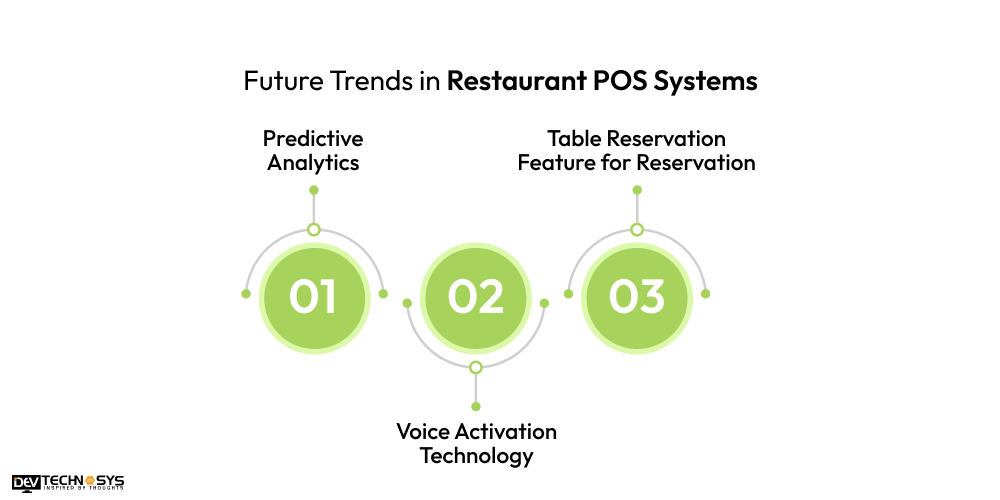
1. Predictive Analytics
Predictive analytics is vital for running a business today. It uses data from the past and machine learning to predict how sales will change in the future. By guessing which days and times will be busy, restaurants can make sure they have enough food on hand and lose less.
For example, inventory management software that is driven by AI can help cut down on food waste. Also, predictive analytics can help with staff organizing, ensuring that there are plenty of staff during busy times. This loweres the labor costs and makes things run more smoothly generally.
Restaurants that use predictive analytics say they lose 10-15% less food. (TechAnnouncer) |
It helps you figure out which things are not selling well so you can change or get rid of them. Anyone who wants to learn more about predictive analytics should start with “Predictive Analytics for Dummies.” This integration makes things run more smoothly and makes the eating experience better.
2. Voice Activation Technology
Voice activation technology in point-of-sale systems is changing how businesses work. The restaurant POS system features lets you take orders without using your hands, which frees up workers to do other things. It also helps accessibility, making sure that all staff members can take part in the order process, no matter what their physical abilities are.
Consumer and Operator Interest: A PYMNTS poll found that 25% of consumers have used voice-activated gadgets to buy things, and 19% are willing to try them. (PYMNTS) |
“A Short History of Nearly Everything” by Bill Bryson looks at how technology has changed everyday life and gives us more ideas. You must carefully think about the merits and demerits of computer time. Voice recognition systems that work well make taking orders faster and give employees more time to talk to customers, which improves service.
3. Table Reservation Feature for Reservation
It could be hard for restaurants and bars to use different systems for booking tables and connect them to their point-of-sale (POS) systems. These problems can be solved by adding a ticket management tool to the POS system.
The POS system helps OpenTable seat over 31 million guests every month.When restaurants use OpenTable, they say that orders go up by 15 to 20 percent. |
It can give a point-of-sale (POS) product a big edge over other products on the market. By adding this feature to the POS system with the help of a POS software development services provider, you can easily run everything from a single screen, collecting data on sales.
These insights can help businesses make choices based on data, run their businesses more efficiently, and find ways to make things better. This integration not only makes reporting easier, but it also makes accounts work better.
Final Thoughts
A POS system makes running a restaurant a lot easier, which increases accuracy, efficiency, and customer happiness. It gives you a lot of useful information, from managing orders and keeping track of supplies to making detailed reports. So, getting the right POS system can make a huge difference in how well a restaurant does.
So, if you have a restaurant business and are planning to seek a custom POS solution, then hire a POS software development company that builds POS software. They can create a system that perfectly aligns with your specific needs, maximizing your restaurant’s potential.
Frequently Asked Questions
Q1. Do I Need a POS System for My Restaurant?
Yes! The POS software for restaurant business will assist you in scheduling and staff insights like well-performing worker and labor hours.
Q2. Why Do You Need A POS System for Your Restaurant?
It may simplify your restaurant operations boost user satisfaction, and facilitate valuable insights for making well-considered decisions.
Q3. What is the Cost to Develop POS System for Restaurant?
The cost to build POS system for a restaurant can range between $10000 – $25000. However, the cost of POS systems for restaurants can fluctuate depending on the complexity of software, functionality, integrations, and so on.
Q4. How To Create POS System for Restaurant?
To make POS system for restaurant, follow the below steps:
- Define Requirements
- Choose Tech Stack
- Develop Core Features
- Integrate Hardware
- Test & Deploy
Q5. Which Type of Business is Most Likely to Need to Implement a POS?
Retail industry is the best industry that deals with their customers regularly. Their key to success is a smooth and effortless transaction procedure. It may assist you in receiving and handling customer details.
Q6. Can a POS System Send Automated Order Updates to Customers?
Ofcourse! POS software may easily sent text and email alerts to their customers and update them on their order status. Besides, it also sends update on estimated waiting time and pickup notification.
